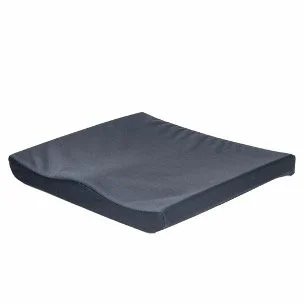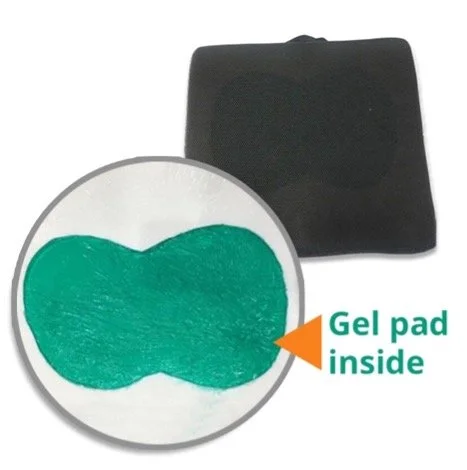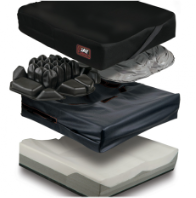Wheelchair Cushion Prescription
The purpose of a wheelchair is to provide users with comfort, pressure relief, ulcer prevention, shock absorption, and postural alignment. Wheelchair cushions come in various shapes, sizes, and materials and designed to distribute pressure evenly across the seating surface. They improve the user’s quality of life, helping to increase mobility and independence, and promote overall wellbeing.
It is recommended to consult with an occupational therapist who can assist with choosing the most appropriate cushion and will take into consideration:
Comfort
Postural Alignment
Skin Protection
Microclimate
Cushion Weight
Maintenance and Durability
Incontinence
Cost
Foam CushionS
They provide structure and stability and can conform to the user’s body type. They are generally prescribed to user’s who have low risk of obtaining a pressure injury. Foam cushions are light weight, generally low maintenance and are the least expensive option. However, they can lose their shape fairly quickly and deform under load, are less apt at distributing pressure and may increase temperature and moisture retention.
Honeycomb cushions:
A honeycomb cushion is formed in a matrix pattern, similar to honeycomb. It is made from thermoplastic which means they are lightweight and flexible. These cushions are generally prescribed to users with a low risk of obtaining a pressure injury. They are lightweight, flexible, and easy to clean and increase airflow and temperature regulation compared to a foam cushion. However, these cushions are not suitable for permanent wheelchair users because there is a potential for shearing forces which can cause damage to the skin.
Gel Cushions:
Gel cushions generally have a gel pocket and are surrounded by a foam base. These cushions are generally prescribed to users with a moderate risk of obtaining a pressure injury. They provide increased comfort with cooling effects and the gel is located to alleviate weight from bony prominences. They are better for active individuals with decreased risk of shear forces and may have a contoured base to provide better posture and stability. However, gel cushions are heavy and may be harder to transfer on and off
Fluid Cushions:
Fluid cushions are generally made from a Non-Newtonian fluid which is a semi-solid or highly viscous fluid which flows with pressure. These cushions are generally prescribed to users with a moderate to high risk of obtaining a pressure injury. Fluid cushions respond to load and conform to the body and therefore provide extremely good pressure distribution. However they may require redistribution following use due to migration of the fluid with pressure.
Air Cushions:
Air cushions are commonly used to disperse weight to avoid prolonged pressure. The cushion consists of cells or chambers which are inflated with air to fit each individual. These cushions are generally prescribed to users with a high risk of obtaining a pressure injury. Air can travel between cells which allows the cushion to contour to the user as they move or be locked in certain chambers to provide specific pressure relief to specific areas. Air cushions provide shock absorption and are lightweight. However, Air cushions are more expensive, the cells can deflate and require refilling to have pressure relieving effects. This means they are higher maintenance and require some knowledge to use. The user needs to have postural stability as they do not provide postural correction and stability and they can also be harder to stand from.
If you require a wheelchair cushion, feel free to get in contact to arrange an assessment with one of our Occupational therapists to get started.





